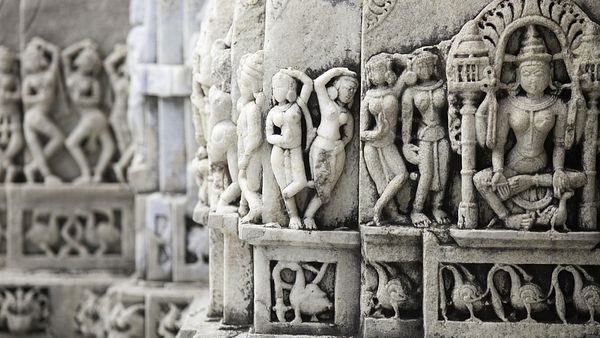Introduction to Ancient Art
Ancient art is not just about paintings and sculptures; it’s a fascinating window into the lives, cultures, and beliefs of people who lived thousands of years ago. From the symbolic carvings on ancient stones to the breathtaking murals inside forgotten temples, ancient art allows us to connect with our ancestors and understand how they perceived the world around them. But what exactly makes ancient art so significant, and why does it still captivate us today? Let’s dive into the world of ancient artz and explore its timeless beauty and impact.
The Origins of Ancient Art
The earliest forms of ancient art date back tens of thousands of years. Imagine walking into a cave and seeing handprints, wild animals, and abstract symbols painted on walls. These early cave paintings, such as those found in Lascaux, France, give us a glimpse into the minds of prehistoric humans. They weren’t just doodling for fun – these artworks likely held spiritual or practical significance.
Carvings and sculptures were also common. Think of the Venus figurines, small carved statues of women found across Europe, which date back to the Upper Paleolithic era. These ancient creations showcase the ability of early humans to express complex ideas through art.
Ancient Egyptian Art
When we talk about ancient art, it’s impossible not to mention Ancient Egypt. Egyptian art is full of symbolism, often focusing on the themes of life, death, and the afterlife. The grandeur of their art – from the Great Pyramids to the intricate hieroglyphs on tomb walls – reflects the Egyptians’ belief in eternity.

Paintings and carvings in Egyptian tombs were created to help the deceased navigate the afterlife. Each image and symbol carried a specific meaning, offering protection or guidance to the soul. Pharaohs, gods, and everyday scenes were depicted in a highly stylized manner, emphasizing balance and harmony.
Mesopotamian Art
Moving to the cradle of civilization, Mesopotamia was home to some of the earliest known cities and empires. Mesopotamian art was heavily influenced by religion and the natural world. Temples were adorned with reliefs and statues of gods and kings, often portraying them in powerful poses. One notable example is the Stele of Hammurabi, a stone monument that depicts the king receiving laws from a god.
Art in Mesopotamia was more than just decoration; it served religious and political purposes. The craftsmanship in cylinder seals, small stone objects engraved with intricate scenes, was especially impressive and was used to mark ownership or verify documents.
Greek and Roman Art
The classical art of Greece and Rome has profoundly influenced Western art and culture. Greek art, particularly sculpture, focused on idealized human forms and balance. The ancient Greeks were obsessed with beauty, proportion, and symmetry. Take, for example, the famous statue of the Venus de Milo – it exemplifies the Greek focus on perfection.
The Romans, while influenced by Greek art, introduced their innovations, especially in architecture. The use of arches, vaults, and domes allowed them to build massive structures like the Colosseum and the Pantheon, which still stand today.
Ancient Chinese Art
Across the world in ancient China, art took on a different form. Calligraphy and painting were highly valued, with early Chinese artists emphasizing harmony with nature. Traditional Chinese paintings often featured landscapes, animals, and people in serene, balanced compositions. Jade carvings, pottery, and bronze artifacts from early dynasties are also important examples of Chinese art.
Art wasn’t just about beauty in ancient China – it had a philosophical and moral dimension. For instance, the act of writing or painting in Chinese culture was seen as a way to cultivate the self and bring balance to one’s life.
Indian Art of Antiquity
In ancient India, art was closely tied to religion and spirituality. Temples, sculptures, and Buddhist art are prominent examples. The beautiful carvings on the walls of Ajanta Caves and the grand statues of deities in Hindu temples reflect India’s deep religious devotion.

Buddhist art, in particular, became a significant cultural force, spreading across Asia. The stupas and Bodhisattva sculptures are lasting legacies of Indian artistry that continue to inspire awe.
Mesoamerican Art
The ancient civilizations of the Americas, such as the Maya and Aztecs, left behind some of the most intricate and enigmatic works of art. From towering pyramids to complex stone carvings, Mesoamerican art was deeply tied to religion and the cosmos.
One famous example is the Maya calendar, a stone carving representing their advanced understanding of astronomy and time. The art of this region is rich in symbolism, often depicting gods, celestial events, and myths.
African Ancient Art
Ancient art in Africa is often overlooked, but it is as rich and diverse as any other continent. In Sub-Saharan Africa, early cultures produced remarkable sculptures and masks that were used in rituals and ceremonies. Nok sculptures from Nigeria, for instance, are among the oldest examples of terracotta art in Africa.
African art was not only about aesthetics; it played a central role in community life and spiritual practices. The power of their artistic creations can still be felt today, influencing modern art around the world.
The Role of Religion in Ancient Art
Religion was a driving force behind much of ancient art. Whether it was the gods of Egypt, the deities of Greece, or the spirits of the natural world in Africa, artistic expression was often a way to communicate with the divine. Temples, altars, and sacred objects were decorated with care and reverence.
Ancient Art Techniques
Early artists used a variety of techniques to create their masterpieces. They painted on walls, carved stones, and molded clay into stunning forms. Methods like fresco painting and relief carving were common across multiple ancient cultures. Pottery, mosaics, and jewelry-making were also popular forms of artistic expression.
The Evolution of Art Styles
As time went on, ancient artz evolved from being purely symbolic to more representational. Artists began focusing on realism, especially in Greece and Rome, where human figures were depicted with greater accuracy. These developments laid the groundwork for the artistic traditions we see today.
Preservation of Ancient Art
Preserving ancient art has always been a challenge due to the effects of time and nature. However, modern techniques, such as restoration and conservation, have allowed us to keep these treasures intact for future generations.
Cultural Significance of Ancient Art
Ancient art tells the story of humanity’s evolution, not just in terms of artistic skills but also in terms of culture, values, and beliefs. Every painting, sculpture, or artifact holds a piece of history that reveals what was important to the people who created it.
Conclusion
The world of ancient artz is vast, diverse, and filled with meaning. From the symbolic carvings of prehistoric times to the grand temples of ancient Egypt, each piece tells a story that connects us to our past. As we continue to preserve and study these works, they remind us of the creativity, ingenuity, and spirituality of our ancestors.
FAQ
- What is the oldest known form of ancient art?
The oldest known form of ancient art is cave paintings, such as those found in Lascaux, France, which date back over 17,000 years. - Why was art important in ancient civilizations?
Art played a central role in religious, cultural, and political life. It was used to communicate with gods, document history, and express societal values. - How did ancient Egyptians use art in their tombs?
Egyptian tomb art was meant to help guide the deceased through the afterlife, with images and symbols offering protection and blessings. - What materials did ancient artists use?
Ancient artists used a variety of materials, including stone, clay, bronze, wood, and pigments from natural sources. - How does ancient art influence modern art?
Ancient art has heavily influenced modern art through its techniques, themes, and focus on beauty, symmetry, and symbolism.

